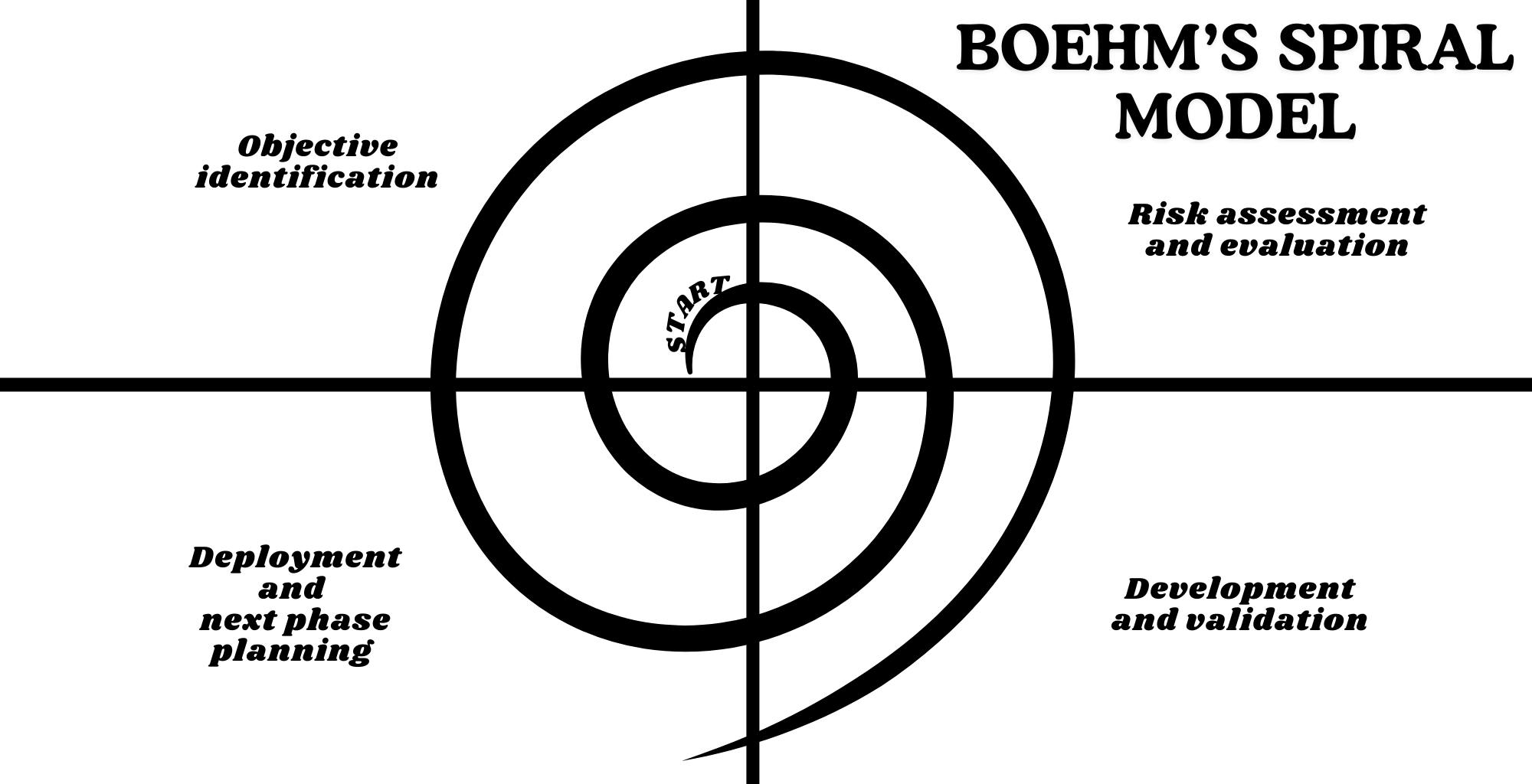Published by Barry Boehm in 1986, the Spiral Model is an iterative, evolutionary approach to software development. It combines elements of the waterfall process model with the requirements analysis capabilities of prototyping.
Features of the Spiral model are:-
In this model, the software engineering team begins at the centre and moves around the spiral in a clockwise direction.
The spiral model is divided into number of framework activities, also called as task regions.
The task reason is the combination of prototype and waterfall model, It provides better accuracy because of repetition.
The spiral model maintains the systematic stepwise approach used in the standard life cycle allowing an iterative framework approach.
The spiral model is used to develop a large-scale project where every framework activity represents a section of the spiral path.
Tailored for large and complex software projects, it emphasizes the rapid development of progressively more complete versions of the software.

- Iterative Evolution:
- Each iteration results in a release, which could be a paper model, a prototype, or an early version of the software.
- Activities in each iteration include objective Identification, risk assessment and evaluation, development and validation, deployment and next-phase planning.
Objective identification:- Task requirement for establishing effective communication between developer and customer and understanding the main objective behind the development.
Risk assessment and evaluation:- task required for defined resources timeline and other project-related information. It includes detailed requirements of project analysis and project designing, where The algorithm and flow charts are used.
Development and validation:- Design detail is translated into machine-readable and testing is conducted to solve the errors, faults and failures of the project.
Deployment and next-phase planning:- It includes software delivery and feedback from customers.
Spiral Concept:
Each iteration can be visualized as an arc within a spiral.
While the approach remains consistent, each arc focuses on a new aspect or feature of the software.
Each iteration involves risk assessment to plan and determine project progression.
Risk assessment influences expected iteration numbers and milestones.
Prototypes are developed to mitigate risks associated with unclear or poorly understood software requirements.
Now let us understand the advantages and disadvantages of the spiral model in detail-
Advantages:
Considers the entire software life cycle.
Adaptable and suitable for large-scale projects due to its iterative nature.
Disadvantages:
Requires expertise in assessing and managing risk.
Convincing customers of the necessity of this evolutionary approach may be challenging.
The main difference between the spiral model and other software process models is its explicit recognition of risk. A cycle of the spiral begins by elaborating objectives such as performance and functionality. Alternative ways of achieving these objectives, and dealing with the constraints on each of them, are then enumerated. Each alternative is assessed against each objective and sources of project risk are identified. The next step is to resolve these risks by information-gathering activities such as more detailed analysis, prototyping, and simulation.

